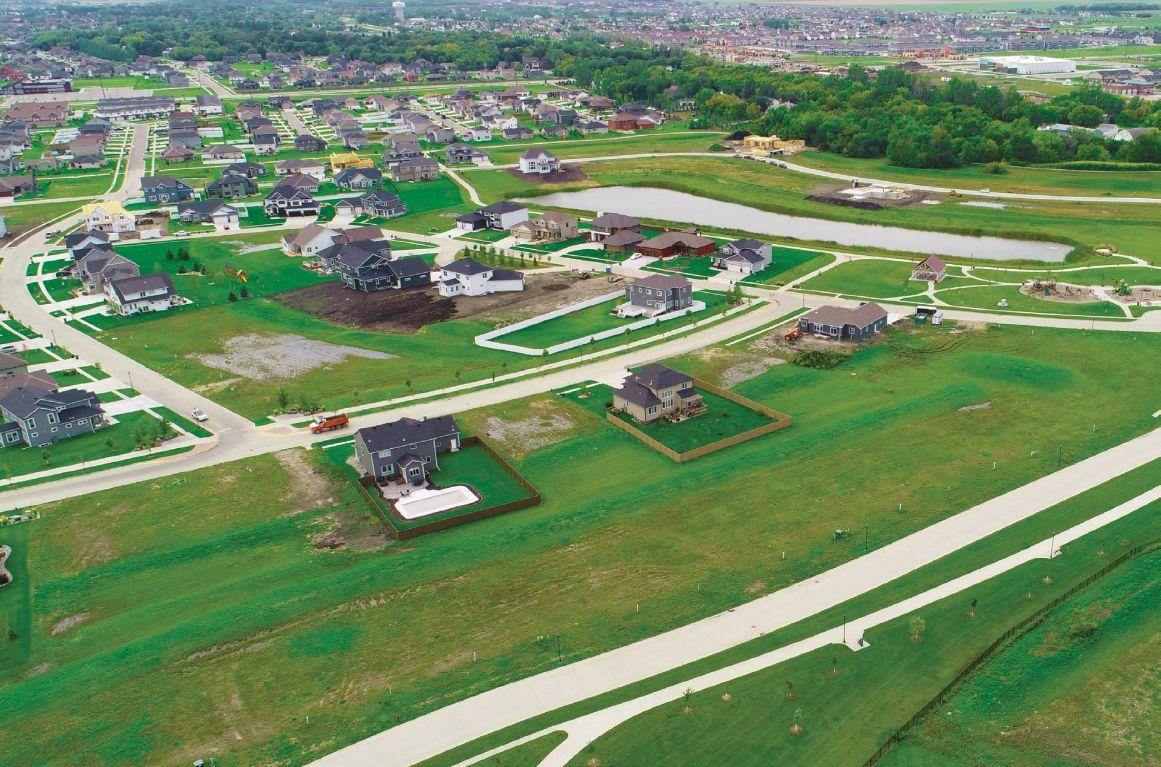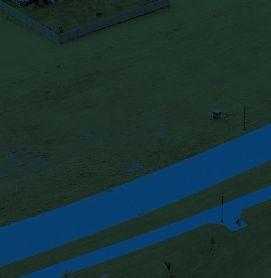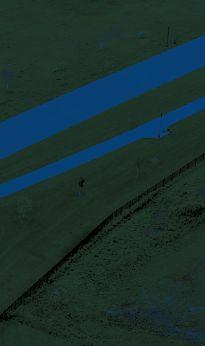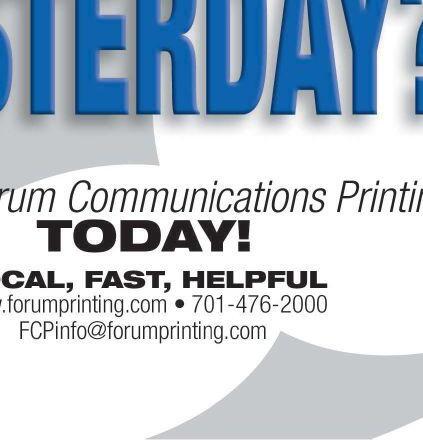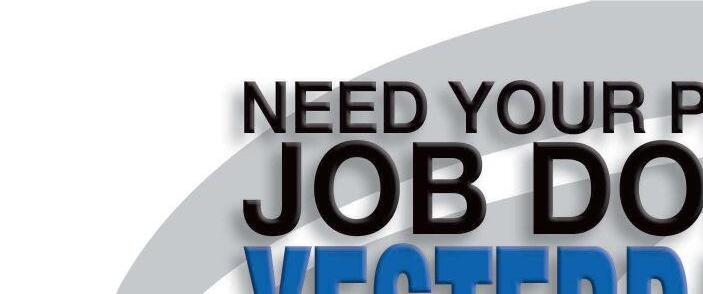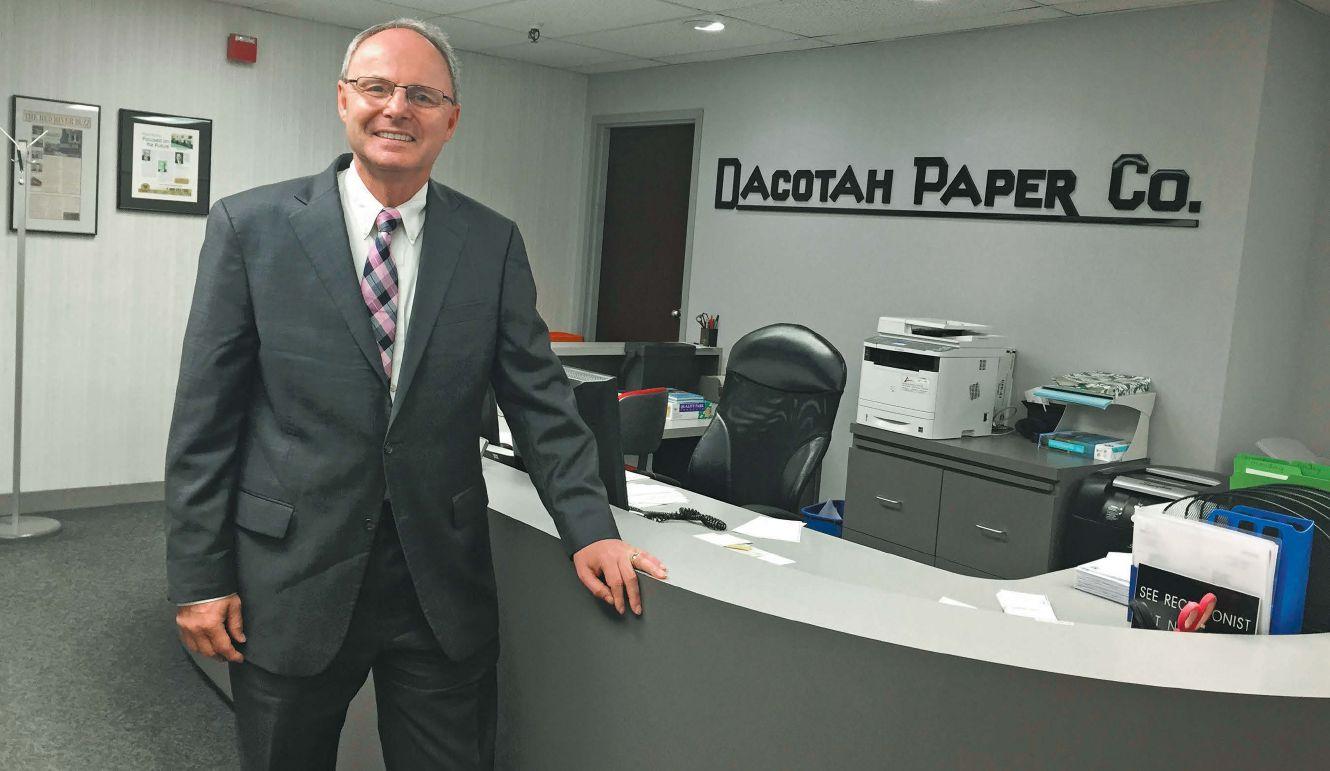
8 minute read
For optimal performance, ‘measure the right things the right way’
By Matthew Mohr
FARGO – Most organizations have a set of criteria which they use to measure progress toward achieving specific goals. Today, industries have developed these criteria into what are commonly called key performance indicators or KPIs.
KPIs are useful in two primary ways: one is to measure progress, another is to measure performance. Establishing them can give leadership a more concrete way of determining whether the organization is moving in the desired direction or slipping.
In addition to using internally developed key performance indicators, a business will also want to look at their KPIs versus those of their industry.
A number of years ago, a national organization that I’m involved with started talking about a service performance measurement as the group tried to help its members improve growth and profitability. I agreed the criteria made sense, pushed my organization toward the new set of goals and created evaluation criteria to judge our progress. And in addition to creating the measurement criteria, we put rewards in place for those involved. After a short while, it appeared we were doing quite well because the numbers were getting better. But as time progressed, certain employees started complaining about one of the people who was being rewarded based on this performance measurement.
To my dismay, we discovered that the manager was changing a key input to make the measurement look good. This manager had “outsmarted” the system in order to get a financial reward, even though his or her real performance didn’t deserve any rewards. On top of cheating the system and the business, the manager’s actions were very frustrating to co-workers.
After the manager’s departure, some people expressed happiness and as is human nature, some felt sorry for the manager. But today the group works better together and keeps stricter numbers; and as a result, the particular KPI is better than it was when the cheater gamed the system.
Health care providers at one time focused their efforts and some advertising on their patients’ average length of stay. The criterion was established as a means of measuring the effectiveness of the care received at a specific institution. In theory, the shorter the average person was hospitalized, the quicker that person was regaining his or her health, and this would be evidence of the hospital’s high level of care and medical expertise.
Unfortunately, once insurers and others started using this criterion for reimbursement purposes and to cut costs, medical providers were pushed to get people out of the hospital quickly, sometimes without proper regard for the patient’s state of health. This is another example of a KPI being used the wrong way.
As time progressed, a new criterion known as the readmission rate became part of the KPIs for most health care providers. Naturally, when we are hospitalized, most of us want to get back home as soon as we can. But we’d prefer to be healthy when we do so, rather than sick enough that we’re likely to return to the hospital for another stay.
KPIs can help management determine if overall goals and standards are being met or not. But by focusing on price or raw input cost, the need to track and measure the desired outcome is often missed.
In a previous column, we discussed labor input costs in respect to profitability per employee; and as that column mentioned, lower or higher wages do not necessarily lead to improved profits for a business or organization. Instead, productivity leads to profitability.
Key performance indicators can be a great tool and are very valuable to any organization. But it’s important to make sure your organization measures the right things the right way.
Matthew Mohr CEO, Dacotah Paper Co. Fargo, N.D.
mmohr@dacotahpaper.com
Cameon Eisenzimmer, prairie archeologist, talks about her work with Ackerman-Estvold, an architecture/ engineering firm
EDITOR’S NOTE:
Cameon Eisenzimmer is an archaeologist, cultural resource manager and GIS or geographic information system analyst for Ackerman-Estvold, a Minot, N.D.-based architecture and civil engineering firm. In this Q&A, she talks about her work.

Eisenzimmer has a bachelor’s degree in anthropology, archaeology and geoscience from Minnesota State University Moorhead, a master’s degree in anthropology and biological anthropology from Wichita State University and a graduate certificate in historic preservation from the University of Kentucky.
A.
WHEN DID YOU DEVELOP YOUR INTEREST IN HISTORY? Q. WOW!
I’m a fifth-generation North Dakotan, and I actually grew up in a house with four generations: my great-grandmother, my grandmother, my mother and myself all lived in the same house. So history has always been important to our family.
Furthermore, it was the house that my great-grandfather had built from a railroad car. Back in 1903, my great-grandfather actually worked for the railroad, and he lived one block north of the tracks.
So, when they decommissioned an old railroad car, he got a whole bunch of his railroad buddies to bring that railroad car one block north. They all got together, pulled it by horse, got it up the street, and it still stands today.
Right. The house has been added on to, but it has been standing since 1903. My grandmother currently lives in it, and I co-own it.
DID YOU PURSUE YOUR INTEREST IN HISTORY IN COLLEGE?
Yes. All the way through high school, I had that interest. I thought I might want to be a history teacher, but Minnesota State University Moorhead was at a career fair here in Minot, and they had a booth set up about archaeology. The staffer talked about not just studying history, but being able to go out in the field and pick up an artifact, a piece of the past – and that when you do so, it’s almost like being transported back to that time. So instead of just teaching history, you become a part of it. And that’s what really fascinated me. I figured I’d rather be out in the field doing something different every day than being at the front of a classroom. So I decided to go the archaeology route instead of the teaching route.
Q.
Q. WHAT KINDS OF THINGS DO YOU FIND?
Q.
DO YOU REMEMBER THE FIRST TIME YOU WERE ABLE TO GO OUT IN THE FIELD?
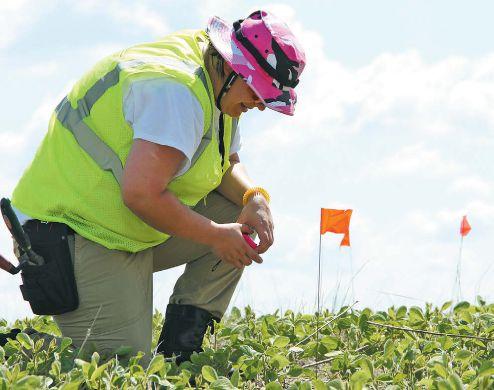
A.At MSUM, where I majored in archaeology, we used equipment to not necessarily dig under the earth, but to see underneath it, like ground-penetrating radar.
And I remember working out in a farmer’s field; he was saying that he had been coming across some artifacts. We went out there with some of our equipment, which detects depressions by letting you see where the soil had been disturbed. We saw row after row of what ended up being graves. We’d actually found a cemetery that no one had any idea was there. We were able to mark it off, let people know about it and bring closure to some of the families who had no idea where their loved ones were buried. And at that point, I knew I was in the right profession.
NOW YOU’RE WORKING WITH ACKERMAN-ESTVOLD, AN ARCHITECTURE AND CIVIL ENGINEERING FIRM. DO MANY ENGINEERING FIRMS EMPLOY ARCHAEOLOGISTS?
A.Normally, archaeologists open their own consulting firm and will have experts in archaeology, prehistoric archaeology and historic preservation. So, what makes us unique is the fact that I have all of those degrees as one, which means you’re kind of a one-stop shop.
So not only can I do archaeology – which spans the period from European contact to about 50 years ago – but also I can do prehistoric archaeology, which is pre-contact and earlier. That means I could do Native American sites and sites that are much older than that.
And now I have my graduate certificate in historic preservation, which lets me analyze structures and buildings and bridges, see what their historic potential is and recommend whether they should be nominated for the National Register of Historic Places. A.
Q. WHAT STAGE OF A PROJECT DO YOU GET INVOLVED IN?
I start at the very beginning, because in the planning stages and if there is any type of federal money or permitting involved, we have to go out to the site and do a field survey to get an initial impression on whether there may be a prehistoric or historic site there.
Eventually, we may do a pedestrian survey, which is where we walk the entire site. We’ll mark with flags everything that we find, and if it starts to look like we’re finding a pattern, we’ll contact the State Historical Society, and we’ll come up with a game plan with them.
Because not every site needs to be excavated. At some sites, you just need to mark where things are at, and you’re good to go from there.
A.It really depends on where we’re at. In North Dakota, what we encounter quite a bit are lithic (or stone) artifacts from Native Americans such as broken arrowheads. Pottery is another big thing that we find – pottery shards from Native Americans. We also encounter a lot of stuff from the farmsteads that were here – nails, old farm equipment, foundations of old buildings. And all of that stuff has to be recorded and marked. A.
Q. COINS?
Q. SO A RUSTED CAR ON THE SURFACE NEEDS TO BE REPORTED?
Yes, but very often, they just want to know that it’s there. It doesn’t mean that it’s going to do anything.
Coins, rusted cars, an old tractor – we have to mark all of that down, fill out a form and submit it to the state. A.
Q. ARE THERE SITES IN THE WORLD THAT YOU’D LIKE TO VISIT?
Q.
WHAT KINDS OF FINDS WOULD BE ESPECIALLY SIGNIFICANT OR MAYBE EVEN DELAY CONSTRUCTION? A.
Any type of human remains is going to put a stop to any type of construction. If it’s especially old – such as, say, when the Canadian fur traders came through – we might end up having to detour a road around it, for example. Or if there are burial mounds, construction is going to have to move.
Q.
WHEN YOU’RE HOLDING A TOOL OR OTHER ARTIFACT THAT YOU’VE FOUND, IT MUST BE FUN TO IMAGINE IT BEING USED.
That’s exactly right. Like I said, picking up an artifact is almost like traveling through time. You can picture what it was in its day, and you’re wondering, who left it there? Why was it dropped? Why was it abandoned? There’s a whole story that’s told in each one of those relics.
A.
Not really. For me, prairie archaeology has always been where it’s at. It’s in my blood, it’s part of my history.
That’s why, during my weekends and evenings, I take old quadrangle maps and locate old churches, because where old churches were, normally there are old cemeteries that have been forgotten. I’ll mark them, get all the information, GPS it, and send the information to the state.
Q.
AT TIMES, YOU MUST HAVE TO GET DIRTY IN THE COURSE OF YOUR DAY. A.
Yes, but I’m lucky, because I’m one of the few who gets to wear blue jeans to work! I never know when I’m going to get a call to go out into the field. I go from having clean clothes to being covered in mud because I’m trying to find something out in the field.
Q. IT SOUNDS LIKE THERE ARE ARTIFACTS EVERYWHERE YOU LOOK, INCLUDING ON SEEMINGLY EMPTY FARM FIELDS ACROSS THE GREAT PLAINS.
Q.
DOES YOUR KNOWLEDGE OF ARCHAEOLOGY CHANGE THE WAY YOU LOOK AT LANDSCAPES? A.

Absolutely. I’ve taken a couple of our engineers out in the field, for example, and it’s great to compare notes on how we see things. For example, I see features in the ground – an old prairie trail here, the depression of a house there. I’ll see a small rise and think, “That would be a perfect place for a camp, while they wouldn’t build down here because it’s too low and they’re into the wind, so it’s not going to be the best protection for them.” Those are the things that I pick up on, while they’re looking with their engineers’ eyes and seeing such things as whether the soil is stable enough to build on.
A.More than likely, there are. Think about the fact that even today, we drop coins out of our pockets, we lose a pencil. Well, the same thing happened a hundred years ago, and 500 years ago and a thousand years ago.
There are artifacts all over. That’s why, while people always say they walk with their head up, I’m always walking with my head down.
